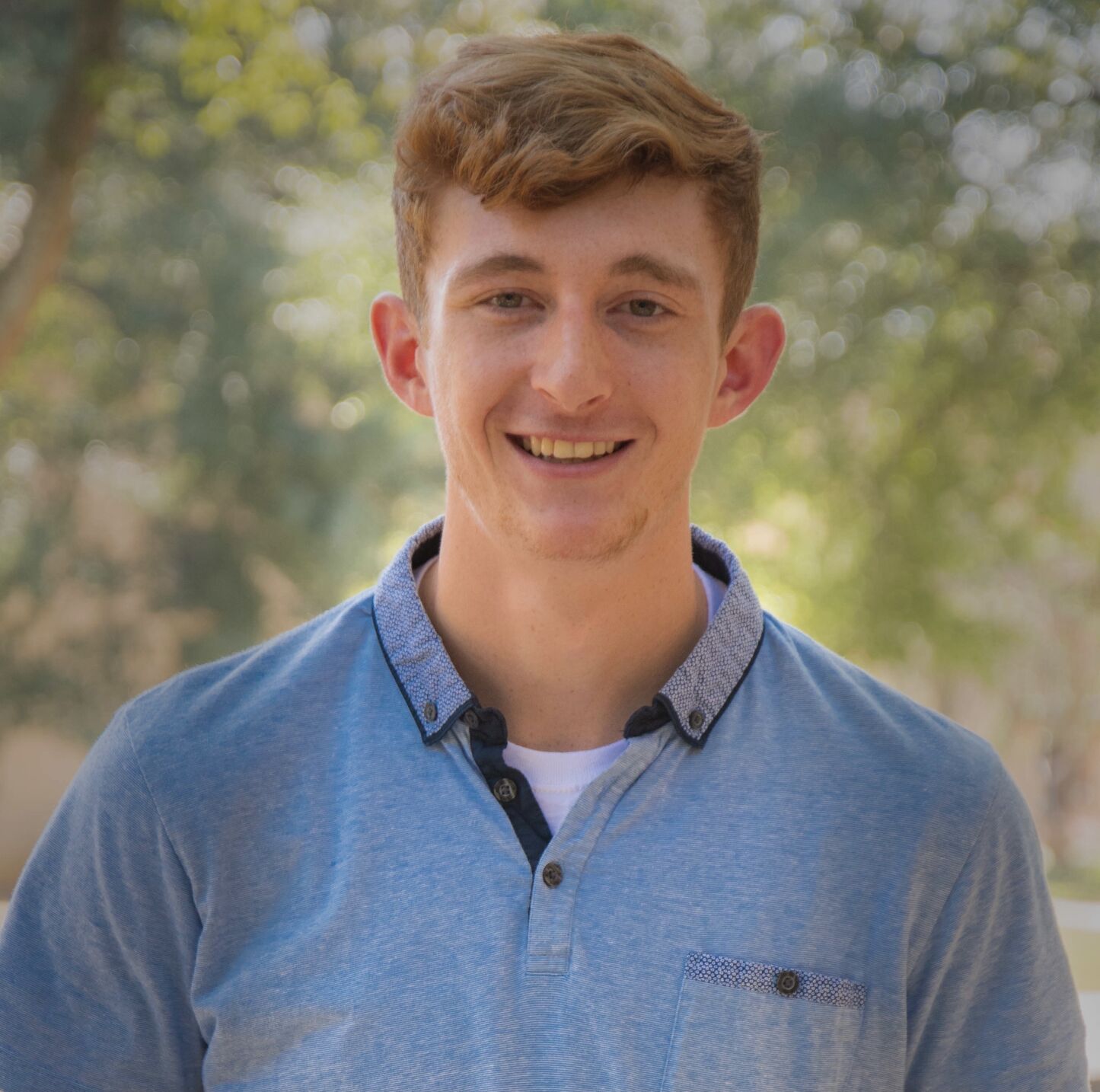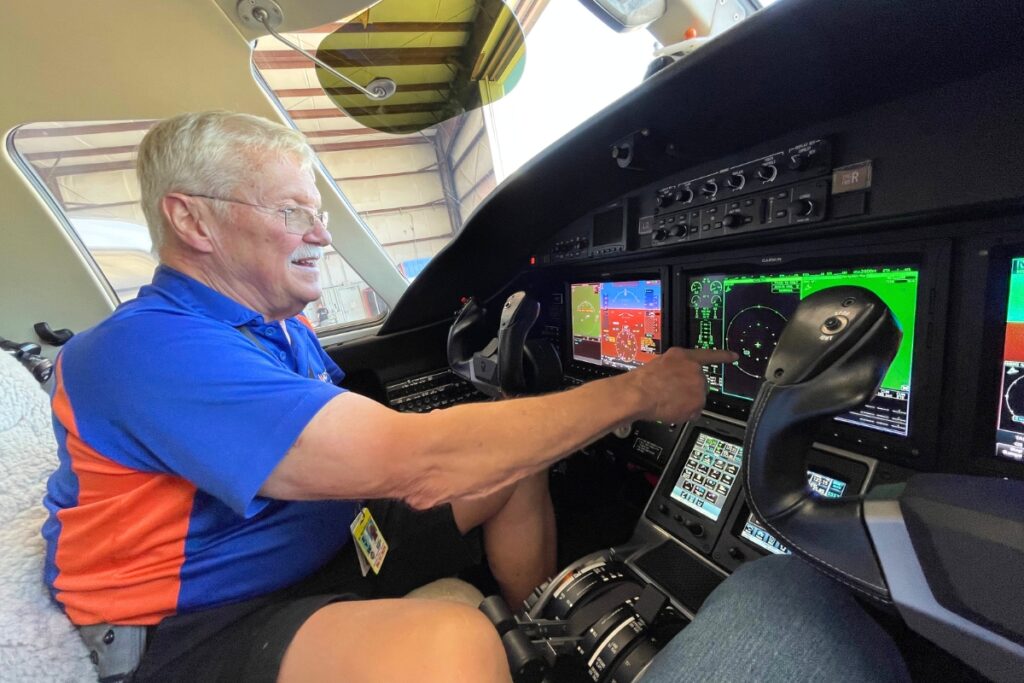
Flying planes and delivering babies requires complete focus. It’s 99% routine and 1% terror—with a bit of stress on the side.
Dr. Mike Lukowski has done both regularly for his adult life, serving as an OB-GYN for 35 years at UF Health and owning the University Air Center (UAC) at Gainesville Regional Airport.
While distinct, the two jobs also combine through one of the UAC’s primary roles: flying hundreds of organs to UF Health each year for transplant operations. From hearts and lungs to kidneys and livers, UAC pilots standby 24/7 all year long to quickly transport these organs and save lives.
“We don’t differentiate between 2 a.m. and 2 in the afternoon,” said Debbie Frederick, UAC’s chief operating officer. “When we get the go, within two hours, we have wheels up and we’re in the air.”
The UAC’s organ flights pop up without notice, and sometimes they come all at once. On the last Saturday in March, Lukowski recalls that all six planes and crews were called on missions to transport organs.
The UAC flies around 1,500 medical missions each year. Of those, 363 are nightly flights for LifeSouth Community Blood Centers along with air ambulance services. The organ transports have increased in number since starting in 1997, and the UAC has grown to accommodate.
Lukowski said he always wanted to learn to fly. In 1987, he finally did at the UAC, and he became a part owner two years later before becoming the sole owner in 1989.
Now, another transition is in the works as Lukowski’s son begins handling responsibilities.
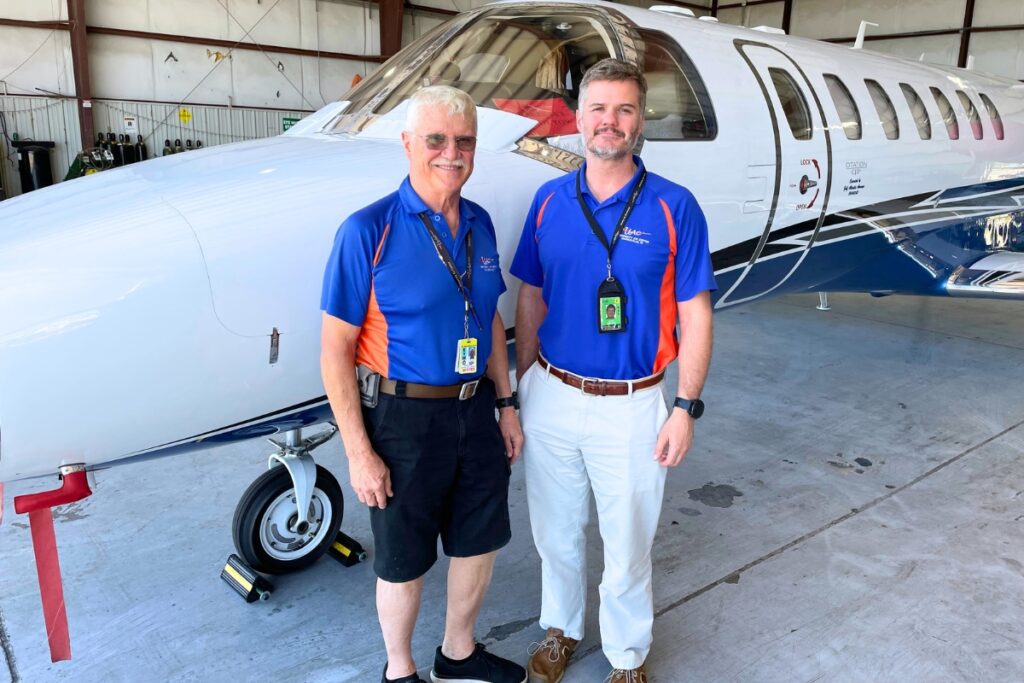
Like his father, Dr. Zack Lukowski also combines health with flying in his professional life. He’s an eye surgeon for UF Health and a UAC chief pilot who has logged hundreds of missions.
The business has four divisions—flight school, aircraft maintenance, pumping fuel for all planes at the airport, and flying charter flights like organ transports.
“It’s a fun business, but you’ve got to keep your eye on the ball here,” Mike Lukowski said.
He recalls several FBOs (fixed-based operator) that have gone out of business at the airport. While the business can bring a lot of money from charter service and pumping fuel, the costs of maintaining aircraft can be just as high.
Organ transport is a subset of a charter plane business. But instead of scheduled flights for business trips to New Jersey, the UAC has entered into a contract to transport organs for UF Health.
While the UAC could add regularly scheduled flights on the side, Lukowski said they want to be ready for any medical missions that occur. Flying someone to a business meeting in New England could put a plane and crew on the sidelines for days or even weeks.
“Rather than just flying this guy out to Hilton Head because he wants to go play golf for the week, which is fine. It’s a good thing to do, but it’s different from I’m going to save somebody’s life,” Zack Lukowski said.
Some nights bring three to four missions, which requires waking up pilots, surgeons and crew. The remaining pilots and crews then get bumped up on the list, leaving little margin to have a plane missing.
The complex coordination needed to fly an organ transport begins before waking up the needed personnel. Frederick estimates it takes between 150 and 200 calls for each medical mission.
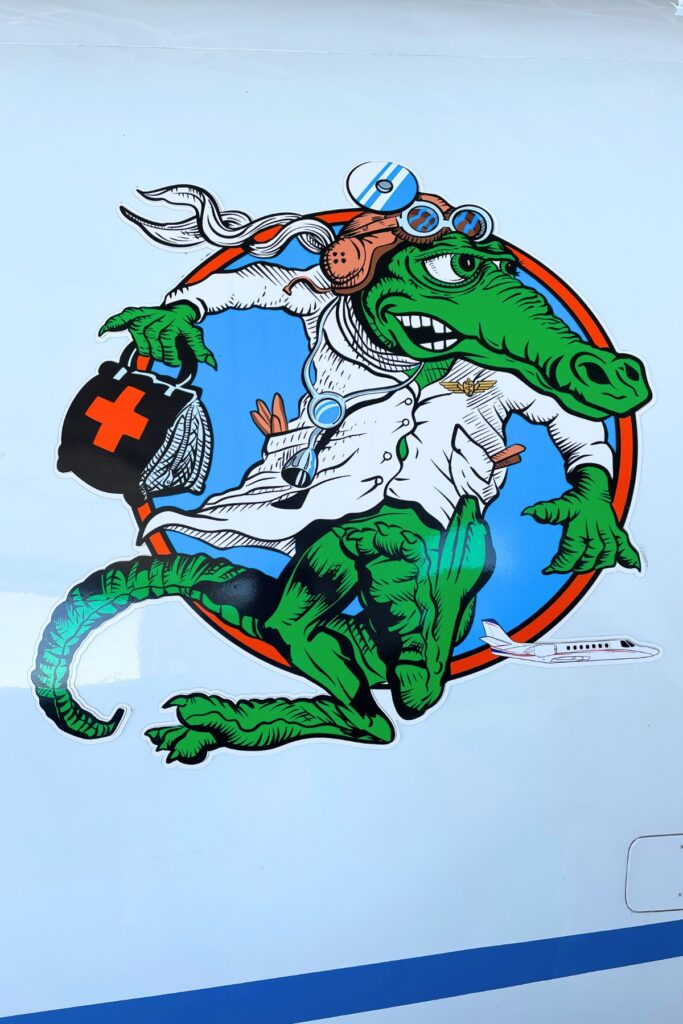
The process begins with a heads up from UF Shands that an organ might need to be transported. UAC has dispatchers active all night and all day at their offices, and once UF Shands gets the green light to get the organ, the hospital transmits the go ahead to the dispatcher.
That dispatcher starts preparing the flight path and checking weather conditions. These get checked with a chief pilot, and the dispatcher also begins TSA paperwork for the UAC and UF Health personnel.
The UAC must coordinate the surgery time, for stable donors, with weather patterns. The Federal Aviation Administration has guidelines on when planes can take off and land in adverse weather.
Two hours before the mission, the dispatcher calls the crew. Pilots head to the airport for preflight checks, and UAC employees also pick up the surgeons.
With everyone at the airport, the flight takes off.
Once on the ground, whether in Alabama or Virginia, the medical crew heads to the local hospital to receive the organ donations while the flight crew waits for the return journey.
Frederick explains that most surgeons perform the operation to receive the organ personally—cutting out the organ carefully in order to be able to perform the transplant surgery after returning to UF Health.
Once the surgeon stops blood flow to the organ, a countdown begins. Crews rush back to Gainesville to transplant the organ. For rare organs like hearts and lungs, the transplant needs to happen within four hours. For livers, surgery needs to happen within about six hours of ending the blood flow.
“Once that organ procurement cycle is started, you gotta make sure that you can carry it out with 99.99% accuracy,” Mike Lukowski said.
UAC flies the organ back to Gainesville Regional Airport, and then a medical crew takes off for UF Health Shands Hospital.
Zack Lukowski explains that most organ donors give more than just a heart or kidney. If several organs are in good condition, then four different surgeons from four different hospitals could arrive, procure the organ, and return to transplant it.
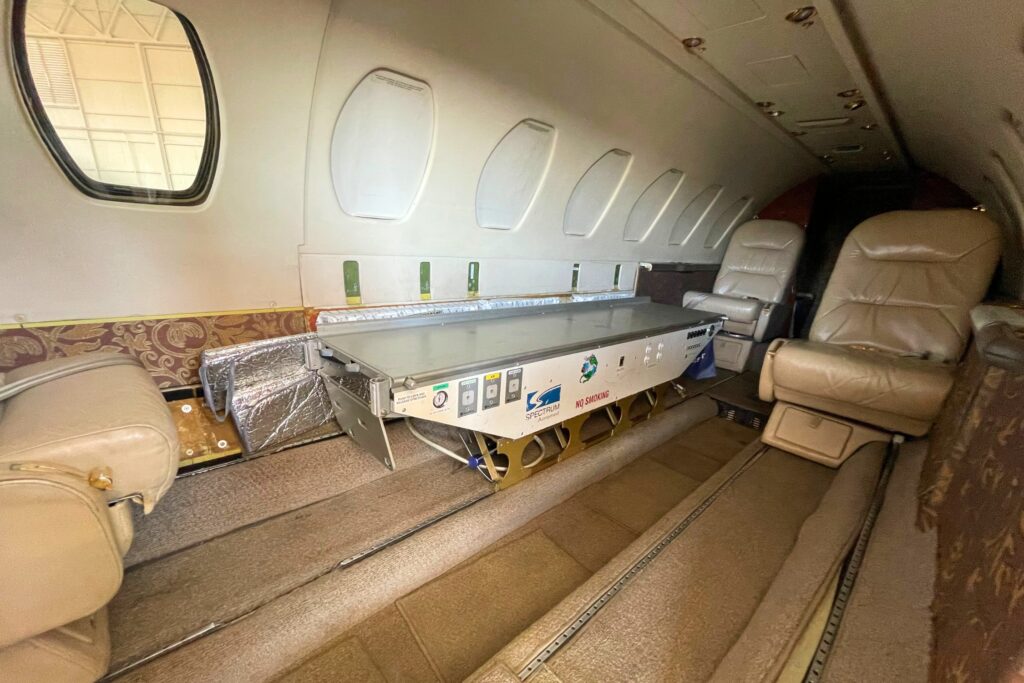
“Literally, there’s four different planes sometimes on the ground picking up organs from one donor. So, it’s a dance,” Zack Lukowski said.
Each separate crew has their own flights to chart, planes to check, and TSA requirements to meet—another 150-200 calls per crew.
The countdown window is critical. Organs can only survive so long outside of a human body—which is called extracorporeal time.
Mike Lukowski said that while UAC flies surgeons to get the donated organ, another medical team preps the patient for surgery. When the organ arrives at the hospital, the patient is already under anesthesia, on the operating table and ready for the transplant.
“When that heart comes into the operating room, they’re ready to put it right into that recipient because that extracorporeal time is critical,” Mike Lukowski said.
Without fast air travel, patients’ transplant options would shrink.
Currently, the UAC has six planes for organ transplant missions. Besides UF Health, the center also flies for national brokers who need organs transplanted.
The critical work comes with a host of considerations for the Lukowskis and UAC staff.
The UAC must manage its fleet of planes and crews to continue the work. Too few planes means the UAC can’t keep up with the demand for organs at UF Health. Too many planes means the UAC doesn’t have enough missions, forcing planes to sit on the tarmac losing money.
“You got to keep your eye on the ball,” Mike Lukowski said. “That’s the big take-home message.”

